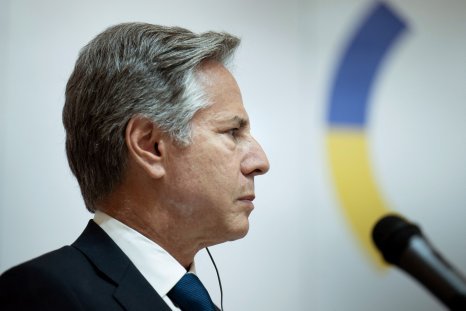
By Liew Chin Tong
JOHOR BAHRU, Malaysia--For me, it is quite disturbing for a young nation like Malaysia is turning reasonably well-functioning Prime Ministerial residences into museums after being in use for just 19 years for Seri Taman, and 16 years (Seri Perdana Kuala Lumpur).
I hope the four Prime Ministerial memorials for the Tunku, Tun Razak, Tun Hussein, and Tun Dr Mahathir be given new functions and uses, and not just to serve as museums. They could be event spaces and offices for universities and think tanks.
Tunku Abdul Rahman was elected Chief Minister of Malaya when it was given self-government status in 1955. The Residency, built on a hill overlooking Kuala Lumpur and once home to British Residents, was made the Tunku’s official residence in 1956.
Between the establishment of the British Resident system in 1875 and 1880, the Residency was built in Klang, the then Selangor state capital. The original timber was moved to Kuala Lumpur when it became the state capital in 1880.
The current brick-wall structure was rebuilt in 1888. The British Resident-General, and later Chief Secretary of Federated Malay States, subsequently occupied the stately home of Carcosa1.
The story of Seri Taman
Following independence, the government commissioned the construction of a Californian-style mansion on a hill slope overlooking Lake Garden as the permanent Prime Ministerial residence.
By the time the new residence was completed in 1962, Tunku as Prime Minister had already resided at the Residency for about seven years and had fallen in love with the old structure2.
He decided to call The Residency home and offered the new residence, dubbed Seri Taman (The Garden), to his deputy Tun Abdul Razak Hussein who assumed the PM office in September 1970 but continued to occupy Seri Taman until his sudden demise in 1976.
Tun Hussein Onn who succeeded his brother-in-law Razak as PM, also stayed at Seri Taman until his retirement in 1981. The original idea of making Seri Taman the official residence for the Prime Minister became the norm.
However, this changed with Tun Dr Mahathir Mohamad’s decision to convert Seri Taman into Tun Abdul Razak Memorial in 1982, a year after he took over the premiership.
Hussein Onn was conspicuously forgotten. The leaflet or exhibits at the Tun Abdul Razak Memorial made no mention of the fact Hussein occupied Seri Taman for five out of its 19 years (1962-1981) as PM’s residence.
Though quite spacious, both the Residency and Seri Taman were not palatial. The Residency sits on 7.5-acres of land with an imposing view over Kuala Lumpur.
But after Tunku’s retirement, the 19th century building was “condemned” by the Public Works Department on the grounds that it had housed an incurable and apparently indestructible army of white ants.
The Tunku had to return from Jeddah, where he served at the Islamic Secretariat, to implore his successor to preserve the house3. Eventually it was made the Tunku Abdul Rahman Putra Memorial in 1994.
While the Tunku claimed that Seri Taman was “with the best of everything—a spacious, airy mansion with large rooms and a lovely view looking down on [the Lake Garden] and flowering gardens in the valley below,”4 the building has no flamboyant pretension.
The ascent of Seri Perdana
After turning the then 20-year-old Seri Taman into a memorial, Dr Mahathir embarked on a bold project of building a larger residence for himself - Seri Perdana (The Prime) Kuala Lumpur.
The government acquired a 4.6-acre Seri Timah (The Tin) from Malaysia Mining Corporation, which was the residence for MMC Chairmen. The original Seri Taman residence was slightly more than an acre in size.
The original house was demolished and replaced with a new complex that cost the government RM11 million in 1983. Dr Mahathir and his family moved into Seri Perdana Kuala Lumpur on 23 August 1983, and vacated the residence on 18 October 1999 upon their relocation to the new Seri Perdana Putrajaya.
The residence was handed over to the National Archives on 3 August 2000 for conservation, and now renamed Galeria Seri Perdana and opened to the public since 20 December 2003 as a memorial for Dr Mahathir.
As an afterthought, the old Prime Minister Office complex in Jalan Dato’ Onn was converted to become Tun Hussein Onn Memorial in 2006.
Seri Perdana Putrajaya sits on a land of 42.5 acres. For a period of more than 10 years before the new Istana Negara was built, Seri Perdana Putrajaya was the most palatial, opulent and far more expensive than any royal palace in the country. Comparatively, Seri Taman was very modest.
For me, it is quite disturbing that a young nation like Malaysia is turning reasonably well-functioning Prime Ministerial residences into museums after being in use for just 19 years for Seri Taman, and 16 years (Seri Perdana Kuala Lumpur).
I hope the four Prime Ministerial memorials for the Tunku, Tun Razak, Tun Hussein, and Tun Dr Mahathir be given new functions and uses, and not just to serve as museums. They could be event spaces and offices for universities and think tanks.
I believe that we don’t have to build further dedicated memorials for Abdullah, Najib, Muhyiddin, Ismail or whoever comes after him. Prime Ministers come and go.
It is not about erecting a memorial or building a monument for them. Their legacies will be remembered in the decisions made when they were in office and reflected in the well-being of the people.
There is certainly a need to house our Prime Ministers in a decent residence. However, we must accept the fact that PMs do not live in palaces. We should stop treating them like kings.








0 Comments
LEAVE A REPLY
Your email address will not be published